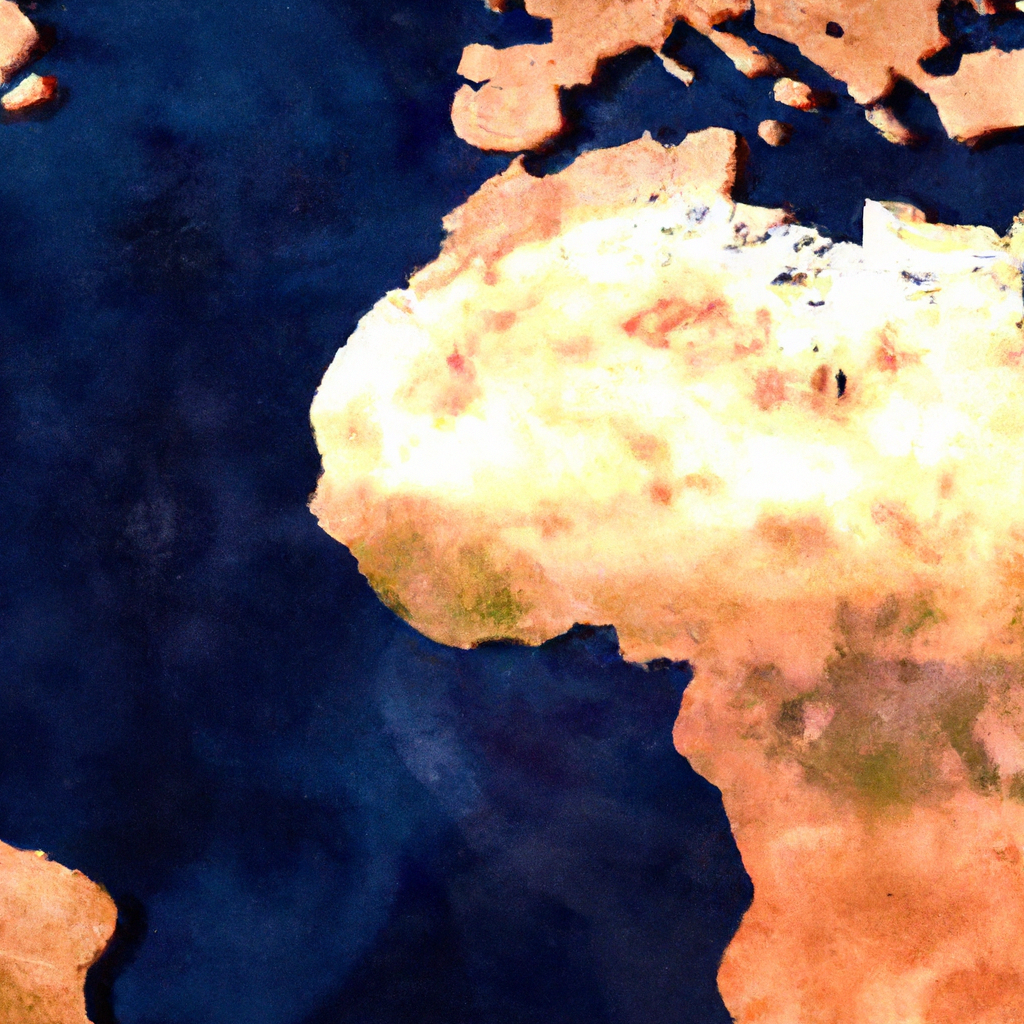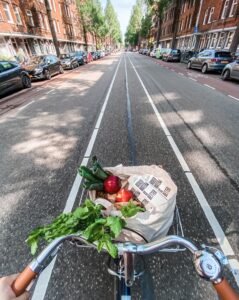What Are The Main Threats To Global Biodiversity: Introduction
In today’s interconnected world, it is crucial to answer the question, “What Are The Main Threats To Global Biodiversity.” From habitat destruction to climate change, these threats pose significant challenges to the delicate balance of our planet’s ecosystems. Exploring the key factors that endanger biodiversity not only raises awareness but also highlights the urgent need for sustainable practices to preserve our natural environment. Join us on a journey to uncover the main threats to global biodiversity and discover how we can all play a role in protecting our planet’s incredible diversity of life.
Biodiversity is the variety of life on Earth, encompassing all living organisms and their interactions within ecosystems. It plays a vital role in maintaining the planet’s ecological balance, providing us with essential resources, and contributing to the overall well-being of humanity. However, our planet’s biodiversity is at risk due to numerous threats. This article will explore the main threats to global biodiversity and highlight the detrimental impacts they have on our planet.
What Are The Main Threats To Global Biodiversity: Habitat Loss
Deforestation
Deforestation is one of the primary drivers of habitat loss worldwide. As human populations grow and expand, we clear vast areas of forests to make way for agriculture, infrastructure development, and urbanization. Massive tracts of vital forest ecosystems are being destroyed at an alarming rate, leading to the displacement and extinction of countless plant and animal species. Furthermore, deforestation not only disrupts local ecosystems but also contributes to climate change by releasing significant amounts of carbon dioxide into the atmosphere.
Urbanization
The rapid growth of cities has led to the conversion of natural habitats into urban areas. As urbanization expands, it encroaches upon previously untouched lands and fragment habitat systems. This fragmentation disrupts the connectivity between different ecosystems, leading to isolation for many species and limiting their ability to migrate, find food, and reproduce. Urban areas are often devoid of the diversity found in natural ecosystems, causing the loss of countless species and reducing overall biodiversity.
Conversion of Land for Agriculture
The increasing demand for food and agricultural products has resulted in the conversion of vast amounts of land for farming purposes. This conversion often involves the destruction of diverse ecosystems, including forests, wetlands, and grasslands. Industrial agriculture practices, such as monoculture farming and the use of chemical fertilizers and pesticides, further contribute to habitat loss and degradation. The loss of natural habitats due to intensive agricultural practices has severe implications for biodiversity, as it diminishes the availability of suitable living spaces for countless species.

Check Out Our Top Eco Friendly Product Picks On Amazon Here
What Are The Main Threats To Global Biodiversity: Climate Change
Rising Temperatures
Climate change, primarily driven by human activities, is a significant threat to biodiversity across the globe. Rising temperatures alter ecosystems and disrupt the delicate balance that allows species to thrive. As temperatures increase, many organisms struggle to adapt, impacting their growth, reproduction, and survival. Additionally, higher temperatures can lead to shifts in species’ geographic ranges, causing mismatches between essential resources, such as food and nesting sites, and species’ distribution patterns.
Extreme Weather Events
Climate change intensifies the occurrence and severity of extreme weather events, such as hurricanes, droughts, floods, and wildfires. These events directly impact biodiversity by causing habitat destruction, population declines, and even species extinctions. Destructive hurricanes and floods can devastate entire ecosystems, wiping out habitats and destroying vital food sources for countless organisms.
Sea Level Rise
Rising sea levels, another consequence of climate change, pose a significant threat to coastal ecosystems and the species that rely on them. As sea levels rise, coastal habitats like mangroves, coral reefs, and salt marshes are threatened with inundation and erosion. These habitats provide critical breeding grounds, nurseries, and feeding areas for numerous marine species. The loss of these coastal ecosystems would have far-reaching consequences, affecting not only marine life but also the people who depend on these habitats for their livelihoods.
What Are The Main Threats To Global Biodiversity: Invasive Species
Introduction of Non-Native Species
Invasive species are non-native organisms that establish themselves in new environments and outcompete native species for resources. Human activities, such as global trade and travel, unintentionally introduce these invaders to new ecosystems. Invasive species cause significant harm by preying on native species, outcompeting them for food and habitat, and altering entire ecosystems. Their rapid spread can lead to the decline or extinction of native species, disrupt essential ecological processes, and reduce overall biodiversity.
Competition for Resources
Invasive species often have competitive advantages over native species, allowing them to outcompete them for resources like food, shelter, and breeding sites. Native species may not have the necessary adaptations or defenses to effectively compete against these invaders, resulting in a loss of biodiversity. Competition for limited resources can lead to the decline and local extinction of native species, ultimately upsetting the balance of entire ecosystems.
Predation and Disruption of Ecosystems
Invasive predator species can have devastating effects on native species, particularly in island ecosystems with limited defenses against predators. The introduction of invasive predators, such as rats or snakes, can quickly decimate populations of native birds, reptiles, or small mammal species. Similarly, invasive plants can outcompete native plant species, disrupting food webs and altering critical habitats. These disruptions can have cascading effects throughout ecosystems, resulting in the loss of biodiversity.

What Are The Main Threats To Global Biodiversity: Overexploitation
Illegal Wildlife Trade
The illegal wildlife trade is a multi-billion-dollar industry that threatens countless plant and animal species worldwide. From the poaching of elephants for ivory to the smuggling of rare reptiles for the exotic pet market, this trade puts immense pressure on vulnerable species. The demand for products derived from wildlife, such as traditional medicines and luxury goods, drives this illegal activity, leading to the decline and potential extinction of many species.
Overfishing
Overfishing is a pervasive threat to marine biodiversity, particularly in heavily exploited areas such as coral reefs and coastal regions. Unregulated and unsustainable fishing practices, such as bottom trawling and the use of destructive fishing gear, devastate marine habitats and deplete fish populations. The loss of keystone species like sharks or large predatory fish disrupts the delicate balance of marine ecosystems, resulting in negative impacts down the food chain and ultimately reducing overall biodiversity.
Poaching
Poaching, primarily driven by the demand for rare animal products such as ivory, rhino horn, or exotic furs, devastates populations of vulnerable species. Poachers target iconic animals like elephants, rhinoceroses, and tigers, pushing them to the brink of extinction. The loss of these keystone species can have far-reaching impacts on entire ecosystems, disrupting ecological processes and reducing biodiversity.
What Are The Main Threats To Global Biodiversity: Pollution
Water Pollution
Water pollution, caused by agricultural runoff, industrial waste, and improper disposal of chemicals, has severe consequences for aquatic biodiversity. Pollutants can contaminate rivers, lakes, and oceans, disrupting ecosystems and harming aquatic organisms. Excessive nutrients from fertilizers can cause harmful algal blooms, depleting oxygen levels and leading to mass fish kills. Additionally, chemical pollutants can accumulate in the tissues of aquatic organisms, causing reproductive issues and health problems.
Air Pollution
Air pollution, primarily from the burning of fossil fuels and industrial emissions, not only affects human health but also poses a threat to biodiversity. Pollutants like sulfur dioxide and nitrogen oxides can lead to acid rain, which damages forests, erodes soil, and acidifies lakes and rivers. These impacts harm plant and animal species, causing population declines and reducing overall biodiversity.
Chemical Contamination
The release of chemical contaminants into the environment, such as pesticides, herbicides, and industrial chemicals, poses a significant threat to biodiversity. These chemicals can accumulate in the tissues of organisms, negatively affecting their reproductive capabilities, immune systems, and overall health. Additionally, pesticides can harm non-target species, including essential pollinators like bees and butterflies, further disrupting ecosystems and reducing biodiversity.

Fragmentation and Habitat Degradation
Infrastructure Development
The construction of roads, dams, and other infrastructure projects often results in habitat fragmentation and degradation. Roads dissect and isolate once continuous habitats, making it challenging for species to move freely and limiting gene flow between populations. Dams can flood large areas of land, destroying entire ecosystems and displacing both terrestrial and aquatic species. The expansion of infrastructure not only disrupts biodiversity directly but also enhances human accessibility to previously remote areas, leading to increased hunting, poaching, and further habitat destruction.
Fragmentation of Ecosystems
Habitat fragmentation arises from the conversion of natural habitats into smaller, isolated patches due to human activities. These fragmented habitats can no longer support the same level of biodiversity found in intact ecosystems. Smaller habitat patches are more vulnerable to invasive species, have reduced genetic variability, and may lack suitable resources for many species. This loss of connectivity between fragmented habitats restricts the movement of species, ultimately leading to population declines and reduced biodiversity.
Loss of Connectivity
The loss of connectivity between different habitats poses significant challenges for species’ ability to disperse, find mates, and colonize new areas. Populations isolated in fragmented habitats become more susceptible to local extinctions and genetic stagnation. Additionally, the loss of connectivity disrupts the flow of energy and resources between ecosystems, affecting the overall functioning and stability of ecosystems. The loss of connectivity is a significant contributor to the decline in biodiversity seen globally.
What Are The Main Threats To Global Biodiversity: Human Population Growth
Increasing Demands for Resources
As the global population continues to grow, the demand for resources increases exponentially. This heightened demand drives the exploitation of natural resources, resulting in habitat destruction and biodiversity loss. The extraction of minerals, timber, and fossil fuels leads to the destruction of critical habitats and ecosystems. The increased consumption of food, water, and energy also puts pressure on ecosystems, leading to overexploitation and environmental degradation.
Expansion of Urban Areas
Rapid urbanization and the expansion of cities bring about numerous environmental challenges, including the loss of natural habitats. As cities grow, they encroach upon surrounding ecosystems, converting them into urban areas. This conversion disrupts local ecosystems, fragments habitats, and displaces countless plant and animal species. The expansion of urban areas not only contributes to habitat loss, but also leads to increased pollution, resource consumption, and degradation of surrounding natural areas.
Overconsumption
The heightened demand for consumer goods and the culture of overconsumption further exacerbate the threats to global biodiversity. The production and disposal of consumer products contribute to pollution, habitat destruction, and resource depletion. This overconsumption places immense pressure on ecosystems and drives unsustainable practices, pushing plant and animal species towards extinction. Addressing the issue of overconsumption is crucial to conserving biodiversity and achieving a sustainable future.

What Are The Main Threats To Global Biodiversity: International Trade
Trade in Endangered Species
The global trade in endangered species, whether for their skins, bones, or live specimens, poses a severe threat to biodiversity. Wildlife trafficking involves illegal activities that profit from the exploitation and destruction of countless species. Endangered animals are captured or killed, pushing populations to the brink of extinction. This trade not only threatens the survival of these species but also fuels other illegal activities such as poaching, habitat destruction, and corruption.
Demand for Exotic Pets
The demand for exotic pets fuels the illegal trade of wild animals and contributes to biodiversity loss. The capture and transportation of these animals often involve cruel practices and inflict immense stress on the animals. Moreover, when released or escaped into non-native environments, exotic pets can become invasive species, disrupting local ecosystems and negatively impacting native species.
Illegal Logging
Illegal logging, driven by the demand for timber, destroys vast areas of forests worldwide. This destructive practice not only threatens the survival of countless tree species but also disrupts ecosystems and contributes to climate change. Forests serve as critical habitats for numerous plant and animal species, and their loss due to illegal logging leads to a decline in biodiversity. Additionally, illegal logging often involves corrupt practices and contributes to social and economic instability in affected regions.
What Are The Main Threats To Global Biodiversity: In A Nutshell
In conclusion, the threats to global biodiversity are diverse and interrelated. Deforestation, urbanization, conversion of land for agriculture, climate change, invasive species, overexploitation, pollution, fragmentation and habitat degradation, human population growth, and international trade all contribute significantly to the loss of biodiversity. Understanding these threats and their impacts is crucial in developing effective strategies to conserve and protect our planet’s biodiversity for future generations. It is our responsibility as stewards of this Earth to take action and prioritize the preservation of biodiversity to ensure a sustainable and thriving planet.




